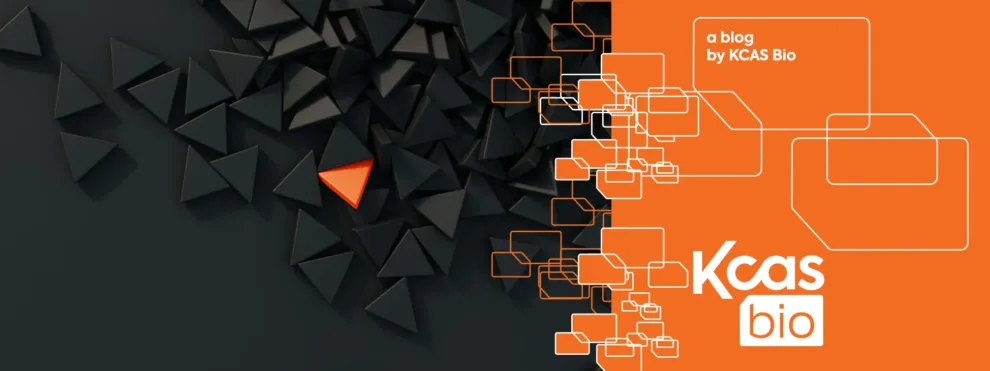Immunoassays are bioanalytical methods that generally use antibodies to detect and quantify specific analytes, often proteins, in biological samples. The process involves the capture of a target protein by an immobilized antibody, followed by its detection with another antibody conjugated either to enzymes, such as phosphatase alkaline or horseradish peroxidase that will convert a colorless chromogenic substrate into a colorimetric signal, or labels that will generate a fluorescent signal upon excitation at the appropriate wavelength or light upon voltage application (electrochemiluminescence). The resulting signal is proportional to the analyte concentration, enabling quantification. Ultrasensitive immunoassays are used to detect biomarkers at extremely low concentrations with the LLOD (Lower Limit of Detection) and LLOQ (Lower Limit of Quantification) being typically in the lower picogram to femtogram per milliliter range.
Early development and evolution of ultrasensitive immunoassay platforms
In the early 2010s, ultrasensitivity emerged as a notable advancement. Singulex® pioneered this field with its Erenna Immunoassay platform, emphasizing its capability to detect extremely low concentrations of biomarkers in biological fluids, focusing, at that time, on cytokines. However, during this period, there were debates on the relevance of measuring such low levels of biomarkers in blood. The widespread adoption of ultrasensitive technologies began with Quanterix’s Simoa® Technology [1], integrating automation and addressing the challenge of increased assay variability at low concentrations, particularly by demonstrating the utility of measuring such low levels of neurological biomarkers in easily accessible biological fluids such as blood.
Since then, several companies have developed ultrasensitive methods, employing diverse innovative technologies, such as immunomagnetic reductions for assays in the neurological field (MagQu) or antibody pairs conjugated to unique oligonucleotide-linked antibodies (Olink’s Proximity Extension Assay (PEA) technology or NULISATM technology from Alamar Biosciences). Others have been leveraging their existing platforms, to optimize either their detection systems – such as Meso Scale Discovery (MSD), which has extended its kit offerings on the S-Plex platform, covering various cytokines and neurological markers – or their reagents, notably antibody pairs such as the case of the ELLA platform from Biotechne or the Lumipulse® G1200, an in vitro diagnostic (IVD) platform from Fujirebio. Taking advantage of their unique know-how in the development of neurodegenerative disease biomarkers, the Lumipulse platform, initially not designed for ultrasensitivity, now supports assays with remarkable sensitivity. With this technology, the Fujirebio Neuro Center of Excellence™ in Belgium, focused on neurodegenerative diseases like Alzheimer’s and Parkinson’s diseases (AD/PD), has developed methods like the Neurofilament Light (Nf-L), the pTau181 or the pTau217 assays for blood, exhibiting sensitivity comparable to Simoa®.
The advent of ultrasensitive technology came thanks to proof-of-concept in the neurological field
In the realm of neurology, the advent of ultrasensitive technologies enabled neurological biomarkers, once thought to be exclusively measurable in the cerebrospinal fluid (CSF), to be detected in the bloodstream. This shift is particularly significant, as it opened new avenues for non-invasive approaches for monitoring the effect of disease-modifying treatments in neurodegenerative diseases. Initial demonstrations were made in patients with traumatic brain injuries (TBI) and sports-related concussions [2,3]. Subsequently, in neuroinflammatory diseases, like multiple sclerosis, the correlation between Nf-L biomarker in blood and disease progression was established [4]. However, validating that blood measurements accurately reflect brain activity is crucial; while Nf-L shows such a correlation, it’s not universal for all neurological biomarkers. The Holy Grail in neurodegenerative diseases – notably AD – involves advancing such blood biomarkers for early diagnosis of patients that may benefit FDA-approved disease-modifying therapies (DMTs). Today, AD diagnosis relies mostly on CSF and imaging biomarkers that are invasive and costly, the integration of blood-based biomarkers for diagnosis will require demonstrating their validity in the “real world population” compared to gold-standard.
How KCAS Bio supports your project to detect low-concentration biomarkers
At KCAS Bio, we rely on various cutting-edge platforms using the various technologies mentioned earlier like Simoa® HD-X, the MSD S-Plex platform, and the Ella Automated Immunoassay System. We have also recently acquired the Lumipulse® G1200; with an expanding portfolio of neurological biomarker assays, providing a valuable and robust option, with increased throughput, flexibility, and cost-effectiveness for clinical studies in the neurological field. Besides the neurological field, our expertise in ultrasensitive immunoassays extends to diverse domains, including inflammatory conditions like rheumatoid arthritis or Crohn’s disease, particularly evaluating cytokines or chemokines.
To best determine the most appropriate platform for your study, a comprehensive discussion is necessary to understand the context of use for your biomarker, its function in disease, the mechanism of action of your drug, expected levels and effects of your drug in the intended population and biological fluid. This is crucial, particularly if these biomarkers, produced in peripheric organs, get diluted in the bloodstream, thus requiring increased sensitivity.
Takeaway message
Ultrasensitive immunoassays are used to detect biomarkers at extremely low concentrations, enabling early disease detection, and precise monitoring of disease progression. They are a game changer in the field of neurodegenerative diseases as they contribute to a deeper understanding of pathological processes in the brain and the identification of meaningful biomarkers that can help in the clinical development of disease-modifying drugs. Last but not least, they allow for more accurate monitoring of therapeutic intervention and disease progression through non-invasive sampling of biological samples. At KCAS Bio, we have the technological park and the expertise to conduct the ultrasensitive immunoassays your project requires.
- Shahim P, Tegner Y, Marklund N, Blennow K, Zetterberg H. Neurofilament light and tau as blood biomarkers for sports-related concussion. Neurology. 2018 May 15;90(20):e1780-e1788. doi: 10.1212/WNL.0000000000005518. Epub 2018 Apr 13. PMID: 29653990; PMCID: PMC5957307.
- Piehl F, Kockum I, Khademi M, Blennow K, Lycke J, Zetterberg H, Olsson T. Plasma neurofilament light chain levels in patients with MS switching from injectable therapies to fingolimod. Mult Scler. 2018 Jul;24(8):1046-1054. doi: 10.1177/1352458517715132. Epub 2017 Jun 19. PMID: 28627962.

